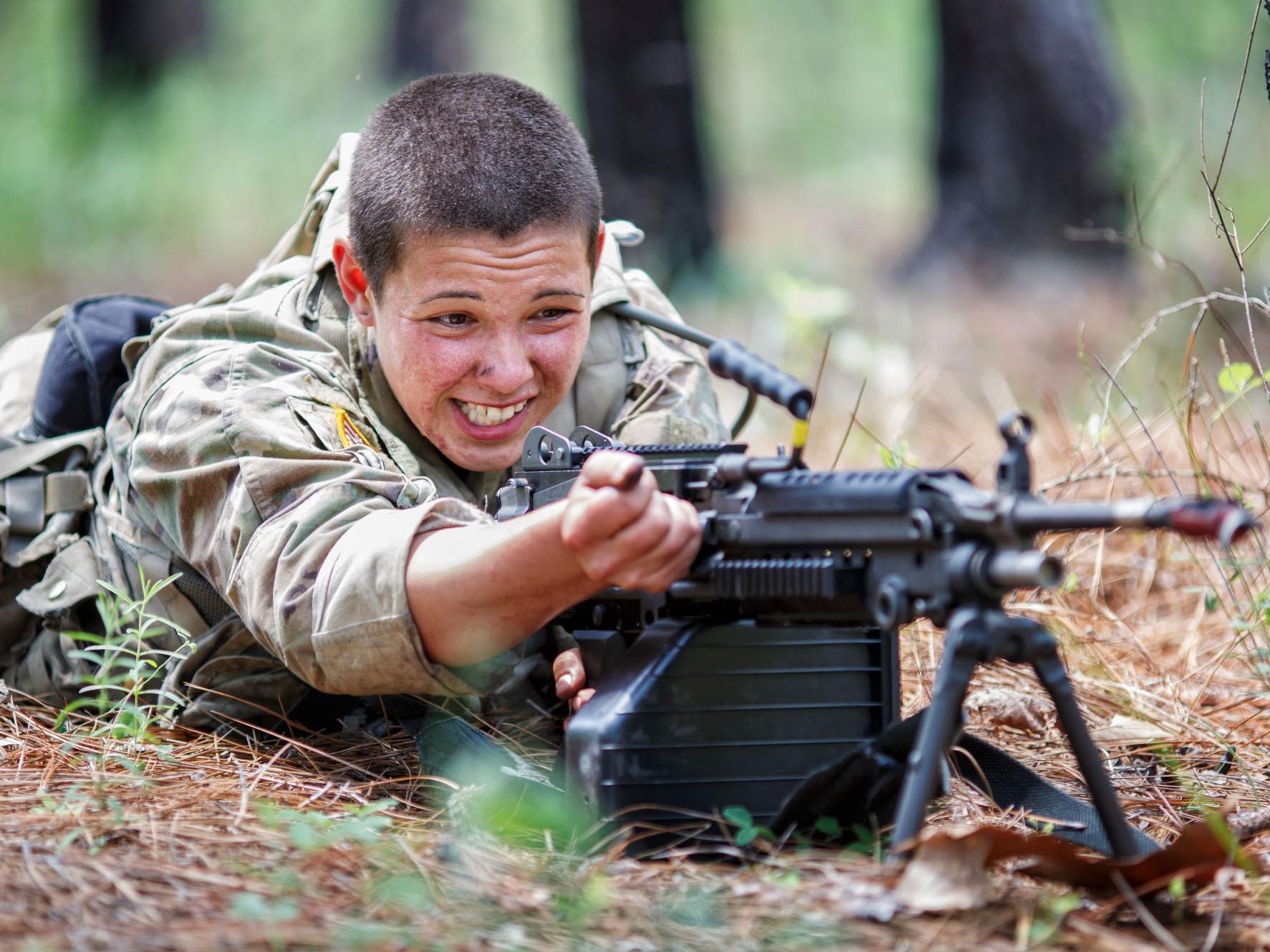US Army Infantry’s first women carrying heavy packs - and the weight of history
Military at pains to implement gender-neutral performances standards since Obama administration ordered all combat positions open to female recruits

The first group of women graduated from US Army infantry training last week, but with soldiers obscured by body armour, camouflage face paint and smoke grenades, it was almost impossible to tell that the mixed-gender squads in the steamy woods here were any different from they have been for generations.
That’s just how the Army wants it.
After the Obama administration ordered the military in 2013 to open all combat positions to women, the Army developed gender-neutral performance standards to ensure that recruits entering the infantry were all treated the same. Still smarting over accusations that it had lowered standards to help the first women graduate from its elite Ranger School in 2015, the Army has taken pains to avoid making any exceptions for infantry boot camp.
The Army has also sought to play down the significance of the new female infantrymen – as they are still known – not mentioning, when families gathered last week for their graduation, that the 18 women who made it through would be the first in more than two centuries for the American infantry.
“It’s business as usual,” the battalion commander overseeing the first class, Lieutenant Colonel Sam Edwards, said as he watched a squad of soldiers run past – including one with French braids and a grenade launcher. “I’ve tried to not change a thing.”
Just before graduation, one female drill sergeant pulled aside a group of female privates, who ranged from high school athletes to a single mother with a culinary degree, and gave them her unofficial assessment out of officers’ earshot.
“This is a big deal,” she said as she looked into one recruit’s eyes.
In the new integrated infantry companies, women and men train together in mixed-gender squads from before dawn until after dusk: practising the same raids, kicking in the same doors, doing the same push-ups when their squad messes up.
At night, they sleep in rooms separated by gender, in identical metal bunks. To graduate, all must pass tests of the same infantry skills, including hurling a grenade 35 metres, dragging a 268-pound dummy 15 metres, running five miles in less than 45 minutes and completing a 12-mile march carrying 68 pounds.
Hair is one of the few places where standards still diverge. All men get their heads shaved on arrival. Women don’t. Not wanting to be held to a different standard, though, many of the women decided a few weeks into training to shave in solidarity.
“I loved my hair, but didn’t want anyone to look at me and think I was being treated special,” said Private Irelynn Donovan.
Afghanistan and Iraq were turning points for the Army’s thinking on women in combat. The wars forced thousands of women who were not technically combat troops into fire fights. Nearly 14,000 women were awarded the Combat Action Badge for engaging with the enemy. Today most of the men leading the Army have served with women in combat for years.
“We saw it can work,” said Major General Jeffrey Snow, who heads Army Recruiting Command at Fort Knox, Kentucky. “And now we have a generation that just wants to accomplish the mission and have the most talented people to do it.”
The Army is determined not to sacrifice performance for the sake of inclusion, and many women have not been able to meet the standard. Of the 32 who showed up at infantry boot camp in February, 44 percent dropped out. For the 148 men in the company, the dropout rate was just 20 percent.
Commanders say the higher dropout rate among females is in line with other demanding boot camps for military police and combat engineers, which have been open to women for years. In part, they say, it is a consequence of size. A five foot two woman has to carry the same weight as a man who stands a foot taller, and is more likely to be injured.
Why did so many more women fail? One female recruit summed it up by saying simply, “Hey, the infantry’s tough, man.”
This month, after 14 weeks of running and crawling in the dirt, Alpha Company marched onto the parade grounds in crisp dress uniforms and carefully creased berets.
The company commander’s voice booming over loudspeakers welcomed them to the infantry, but he gave no nod to the women now joining the ranks.
The women appeared to take it in stride. But Donovan, who had won the award for the highest female fitness score in the company, finishing just behind the top man, shrank in embarrassment when her mother greeted her with a bouquet of flowers.
“Mom,” she muttered, looking to see if anyone noticed, “you don’t bring flowers to infantry graduation.”
© The New York Times
Join our commenting forum
Join thought-provoking conversations, follow other Independent readers and see their replies
Comments